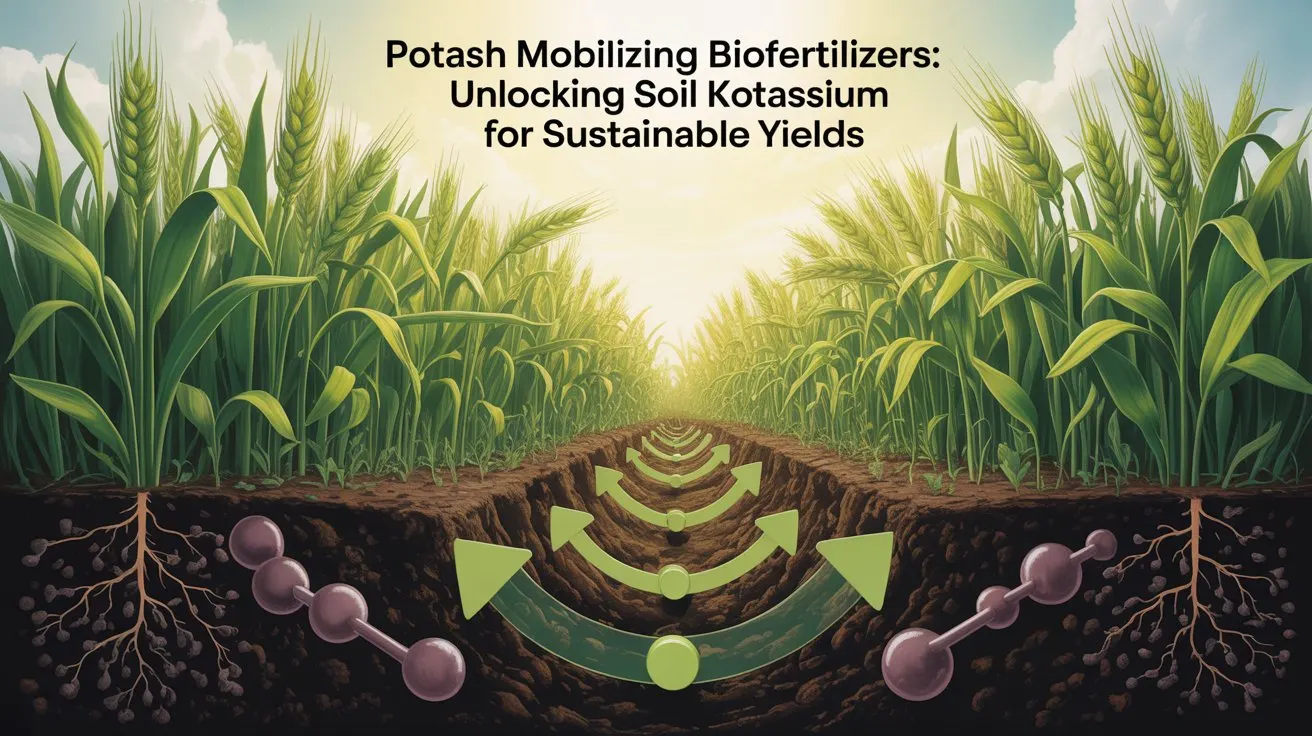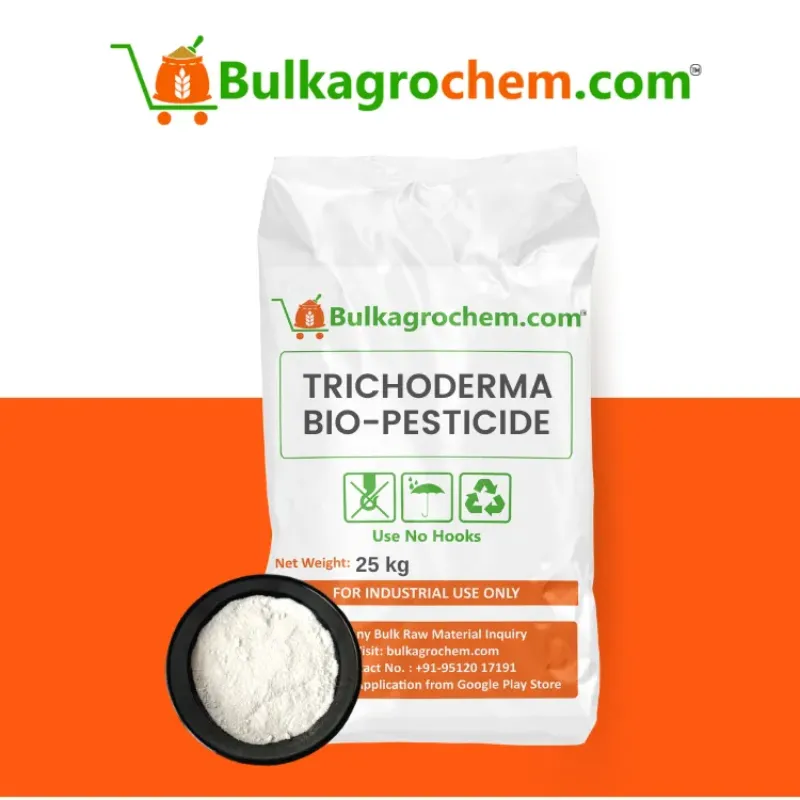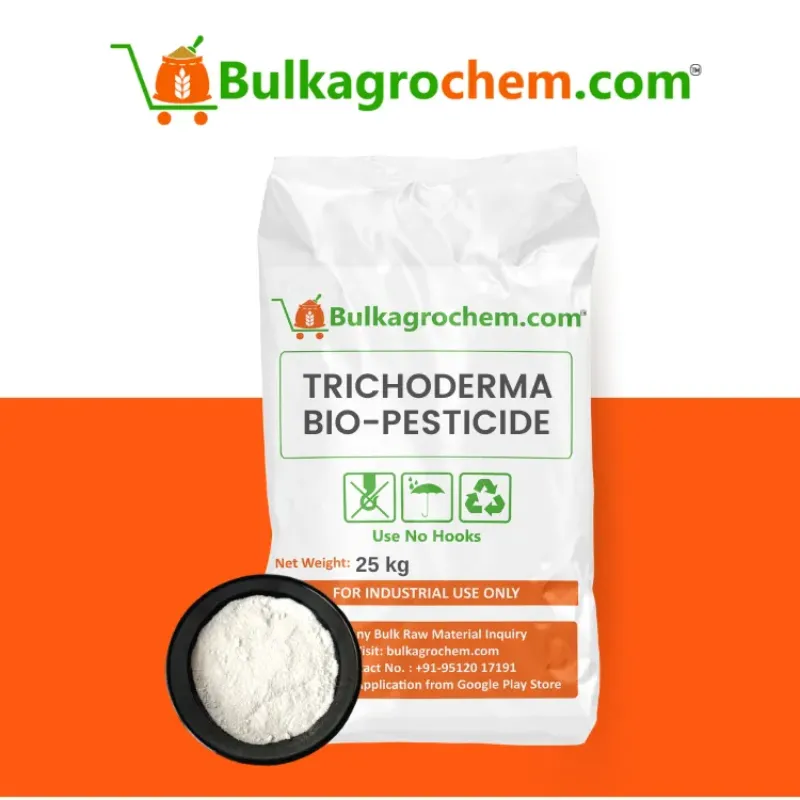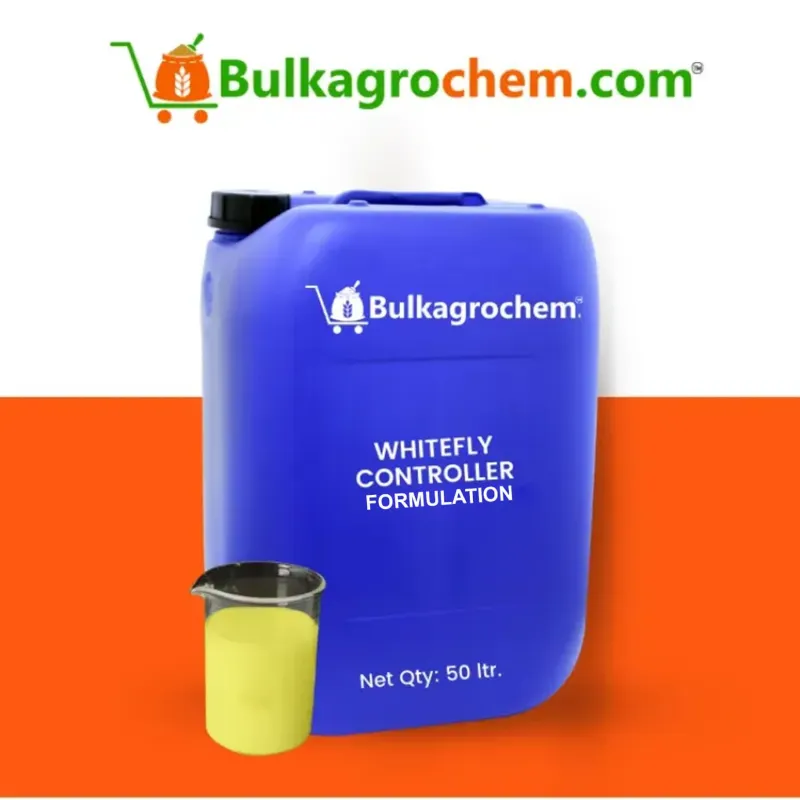Potash mobilizing biofertilizers use specific bacteria like Bacillus mucilaginosus or Frateuria aurantia that provide organic acids and chelators to unlock potassium tied up in feldspars, micas, and clay beads. As a seed coat, granular, or quick-acting biofertilizer, those microbes crop reside in the rhizosphere, solubilize mineral K, and feed it directly to roots—enhancing drought tolerance, grain fill, and sugar transport while avoiding the chloride stress associated with muriate of potash. As producers experiment with newer forms of biofertilizer—nitrogen fixators, phosphate solubilizers, and mycorrhizae—potassium-mobilizing inoculants round out the three nutrient sources, leading to balanced, low-salt fertility programs that replace chemical inputs by 50 %, increase yields by 5–10 %, and develop soil health over a longer period.
Introduction to Potash Mobilizing Biofertilizers
Potash mobilizing biofertilizers (K-mobilizers) are live bacterial or fungal inoculants—most commonly Bacillus mucilaginosus, Frateuria aurantia, and selected actinomycetes—that secrete organic acids and chelators to dissolve potassium locked in primary minerals (feldspars, micas) and clay interlayers. Once liberated, the K⁺ ions move into the soil solution where roots absorb them, reducing the need for chloride-rich muriate of potash (MOP). Field trials show K-mobilizers can supply 20–40 kg K₂O ha⁻¹ per season, boosting grain fill, sugar translocation, and drought tolerance while lowering fertiliser costs and salinity risk.
Why Potassium Matters in Crop Physiology
- Osmoregulation & turgor – K⁺ contributes to cell pressure which, in turn, leads to leaf growth and stomatal activity.
- Enzyme activation – More than 60 plant enzymes need potassium to function correctly, e.g. starch synthetase, and nitrate reductase.
- Stress mitigation – Adequate K strengthens cell walls making them more resistant to lodging, frost and some diseases.
- Quality traits – Balanced K nutrition will result in heavier kernels in cereals, larger tubers in potato and increased sugar/colour in fruit.
Native K Fixation & the Promise of Liquid Biofertilizer Formulations
Soils may contain 5 000–25 000 kg K ha⁻¹, yet <2 % is in plant-available form. Much of the remainder is trapped in crystal lattices (fixed K) or adsorbed on clay surfaces (slowly exchangeable K). Traditional fertilisers add soluble KCl, but a large share soon becomes re-fixed.
Liquid biofertilizer versions of potash-mobilizing inoculants offer three practical advantages:
- High cell density – ≥10⁹ CFU mL⁻¹ ensures rapid colonisation of root zones.
- Ease of placement – Compatible with drip irrigation, pivot fertigation, or low-volume in-furrow injection.
- Uniform distribution – Liquid carriers evenly coat soil particles, maximising microbe–mineral contact and accelerating acid dissolution of K-bearing minerals.
Positioning Among the Different Types of Biofertilizer
Potash mobilizers complete the nutrient-solubilizing trio alongside nitrogen-fixing and phosphate-solubilising inoculants:
By integrating K-mobilizers with other biofertilizers in seed coatings, compost teas, or fertigation solutions, producers create a holistic, low-salt fertility program that enhances yield, quality, and soil resilience without relying solely on finite mineral fertilisers.
The Science Behind Potash Mobilizing Biofertilizers
Potash mobilizing biofertilizers deploy living microbes that convert soil-bound potassium (K) into plant-available K⁺ ions. Unlike muriate of potash (KCl), which supplies soluble chloride salts that can re-fix to clays, these inoculants mine the vast “fixed” reserves locked in feldspars and micas. In liquid biofertilizer form they reach the rhizosphere quickly, colonize root surfaces, and trigger mineral weathering exactly where roots absorb K, ensuring higher use-efficiency and lower salinity stress than conventional top-dressings.
Key Microbial Genera (Bacillus mucilaginosus, Frateuria aurantia)
Both genera secrete strong organic acids—gluconic, oxalic, malic—that dissolve silicate lattices, freeing K⁺ while also releasing trace Si beneficial for lodging resistance.
Organic-Acid Weathering vs. Conventional KCl Dissolution
- Organic-acid weathering (bio-route)
- Microbes lower micro-pH around mineral grains.
- Chelators bind Al³⁺ and Fe³⁺, breaking the crystal framework.
- K⁺ is released gradually, matching crop demand and minimizing leaching.
- KCl dissolution (chemical route)
- Supplies readily soluble K⁺ and Cl⁻ in bulk.
- Up to 40 % of applied K re-adsorbs to clay interlayers within weeks.
- Excess Cl⁻ can raise soil salinity and compete with NO₃⁻ uptake.
Because organic-acid weathering is progressive and root-proximal, potash mobilizing biofertilizers often achieve similar yield responses with 30–50 % less applied KCl.
Synergy with Mycorrhizae and Other Different Types of Biofertilizer
Potassium-solubilizing bacteria do not work in isolation:
- Mycorrhizal fungi extend hyphae beyond the root depletion zone, capturing the freshly liberated K⁺ and transporting it back to the plant in exchange for sugars.
- Phosphate-solubilizing microbes acidify the rhizosphere further, amplifying K weathering while releasing P—two nutrients often co-limited.
- Nitrogen-fixing inoculants supply ammonium, whose proton extrusion slightly lowers pH and complements bacterial acid production.
Integrating these different types of biofertilizer into a single granular blend or liquid biofertilizer cocktail can therefore generate multi-nutrient release, stronger root systems, and a more diverse soil microbiome—pivotal for resilient, low-input cropping systems.
Benefits of Switching to Liquid Biofertilizer Potash Solutions
Potash mobilizing biofertilizers are now formulated as stable suspensions—typically 1 × 10⁹ CFU mL⁻¹—making them true liquid biofertilizer inputs. This format delivers microbes right to the root zone, short-circuits fixation losses, and dovetails with modern irrigation technology. Compared with granular carriers, liquids spread more uniformly through the soil matrix, lowering per-hectare application rates while amplifying microbial contact with K-bearing minerals. When paired with other different types of biofertilizer (e.g., phosphate solubilizers), growers gain a balanced, low-salt fertility program that supports both yield and soil health.
Reduced Salt Accumulation and Better Soil Structure
- No chloride load: Unlike muriate of potash, liquid K-mobilizer cultures release potassium without Cl⁻ ions, preventing the salinity spikes that degrade soil aggregate stability.
- Organic-acid action: The acids exuded by Bacillus mucilaginosus flocculate fine particles into stable crumbs, improving aeration and infiltration.
- Microbial polysaccharides: Biofilms act as “soil glue,” further enhancing structure and water-holding capacity—benefits rarely seen with mineral salts alone.
Faster Root Uptake Compared with Granular K Sources
- Rhizosphere proximity: Injected or dripped solutions coat root hairs, so liberated K⁺ diffuses mere millimetres before uptake, eliminating the lag common to granular broadcast.
- Immediate colonisation: High CFU counts ensure bacteria begin dissolving feldspars within 24 h, supplying potassium during critical early growth stages.
- Synergistic nutrient flow: When liquid K-solubilizers are blended with nitrogen-fixing or phosphate-solubilizing strains (other different types of biofertilizer), roots access a balanced nutrient suite, accelerating overall biomass accumulation.
Integration with Drip and Pivot Systems
These flexible delivery routes mean liquid K-mobilizers slot effortlessly into existing fertigation schedules. Farms already using soluble N or P injectors can simply alternate tanks, making adoption cost-neutral while reaping the multi-season benefits of potash mobilizing biofertilizers.
Field Application Methods for Potash Mobilizing Biofertilizers
Efficient delivery is the difference between a microbe that thrives and one that dies in transit. Below are three proven strategies—seed coating, foliar/soil liquid dosing, and consortium blending—that maximize the impact of potash mobilizing biofertilizers while dovetailing with other different types of biofertilizer in an integrated nutrient plan.
Seed Coating & In-Furrow Placement
- Dry seed coat
- Mix 200 g peat-based K-mobilizer (≥10⁸ CFU g⁻¹) with 1 kg rice-husk filler per 100 kg seed.
- Add 40 mL molasses solution as a sticker, tumble for 2 minutes, and air-dry 30 minutes in shade.
- Slurry coat for cereals
- Suspend 250 mL liquid biofertilizer culture (1 × 10⁹ CFU mL⁻¹) in 1 L water per 20 kg maize or wheat seed.
- Dry under forced air for uniform distribution; plant within 24 h.
- In-furrow banding
- Inject 5 mL concentrated product per linear metre at seeding.
- Place 3 cm below seed to avoid desiccation yet ensure early colonisation.
Benefit: Early K⁺ release near emerging radicles accelerates root elongation, leading to stronger tillering or branching and a 5–10 % yield lift in K-responsive soils.
Foliar Sprays Using Stable Liquid Biofertilizer Cultures
- Dilute 1 L product in 100 L non-chlorinated water; maintain pH 6.0–6.5.
- Apply at early vegetative and pre-flower stages (e.g., V4 & VT in maize).
- Use hollow-cone nozzles (≥100 mesh) to minimise shear damage to cells.
Although K uptake is primarily root-driven, foliar applications colonise leaf surfaces and drip down stems to the rhizosphere, ensuring a secondary microbe pulse—useful where drip or pivot fertigation is unavailable.
Combining K-Mobilizers with Other Different Types of Biofertilizer (P- and N-Solubilizers)
FAQs
Q1. How quickly can I see yield gains after using a potash mobilizing biofertilizer?
First-season trials show +5 – 10 % yield in K-responsive soils, often visible as stronger tillering within four weeks of emergence.
Q2. Can potash mobilizing biofertilizers fully replace muriate of potash (MOP)?
They typically unlock 20 – 40 kg K₂O ha⁻¹—enough to cut MOP 30 – 50 %. Extremely K-deficient soils may still need a modest starter dose.
Q3. Do these products work in high-pH or saline fields?
Yes. Strains like Bacillus mucilaginosus tolerate pH > 8 and outcompete sodium, making potash mobilizing biofertilizers ideal for alkaline or salt-affected zones.
Q4. Is it safe to tank-mix a potash mobilizing liquid biofertilizer with fungicides or micronutrients?
Avoid copper or highly chlorinated solutions on the same day; most low-salt insecticides and chelated micronutrients are compatible—check the label.
Q5. How long will a liquid biofertilizer stay viable in storage?
Sealed at 4 – 25 °C and <65 % RH, quality formulations hold ≥10⁸ CFU mL⁻¹ for 9 – 12 months; refrigeration extends shelf life further.
Q6. What crop stages benefit most from potash mobilizing biofertilizers?
Early root establishment (seed-to-V4 in cereals) and peak K demand at flowering/fruit-fill. Pair with other different types of biofertilizer for balanced N, P, K nutrition throughout the season.
Conclusion: Future of Farming with Potash Mobilizing Biofertilizers
As the price and environmental cost of muriate of potash rise, growers are pivoting to potash mobilizing biofertilizers that mine the vast, untapped potassium already present in every soil. Delivered as shelf-stable liquid biofertilizer or blended with seed and compost, these K-solubilizing microbes dovetail with the other different types of biofertilizer—nitrogen fixers, phosphate solubilizers, mycorrhizae—creating a balanced, low-salt fertility program. The outcome is a resilient cropping system that cuts chemical inputs up to 50 %, lifts yields 5–10 %, and builds long-term soil health. With policy incentives, precision fertigation, and multi-microbe consortia now moving from lab to field, potash-mobilizing technology is poised to become a mainstream pillar of climate-smart, profitable agriculture.




